Topic 5: Mix Questions
A. Yes
B. No
Explanation: The Logic App Operator role only grants the ability to read, enable, disable, and run logic apps. It does not grant the ability to create logic apps. To create logic apps, you need to assign the Logic App Contributor role or a higher-level role such as Owner or Contributor. Then, References: [Built-in roles for Azure resources] [Azure Logic Apps permissions and access control]
A. a Security group that uses the Assigned membership type
B. an Office 365 group that uses the Assigned membership type
C. an Office 365 group that uses the Dynamic User membership type
D. a Security group that uses the Dynamic User membership type
E. a Security group that uses the Dynamic Device membership type
You have an Azure DNS zone named adatum.com. You need to delegate a subdomain named research.adatum.com to a different DNS server in Azure. What should you do?
A. Create an PTR record named research in the adatum.com zone.
B. Create an NS record named research in the adatum.com zone.
C. Modify the SOA record of adatum.com.
D. Create an A record named *. research in the adatum.com zone
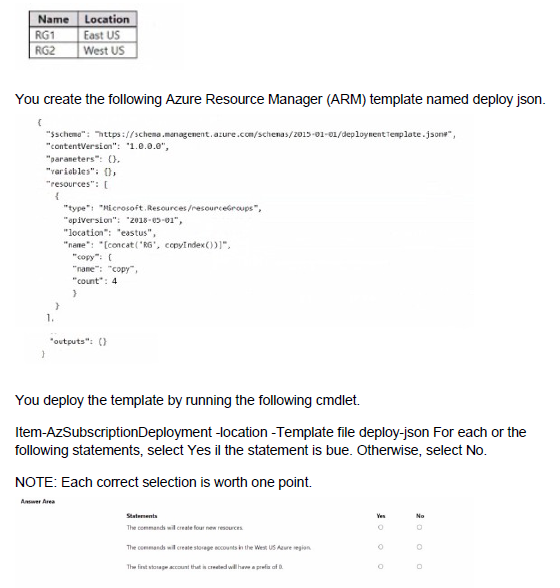


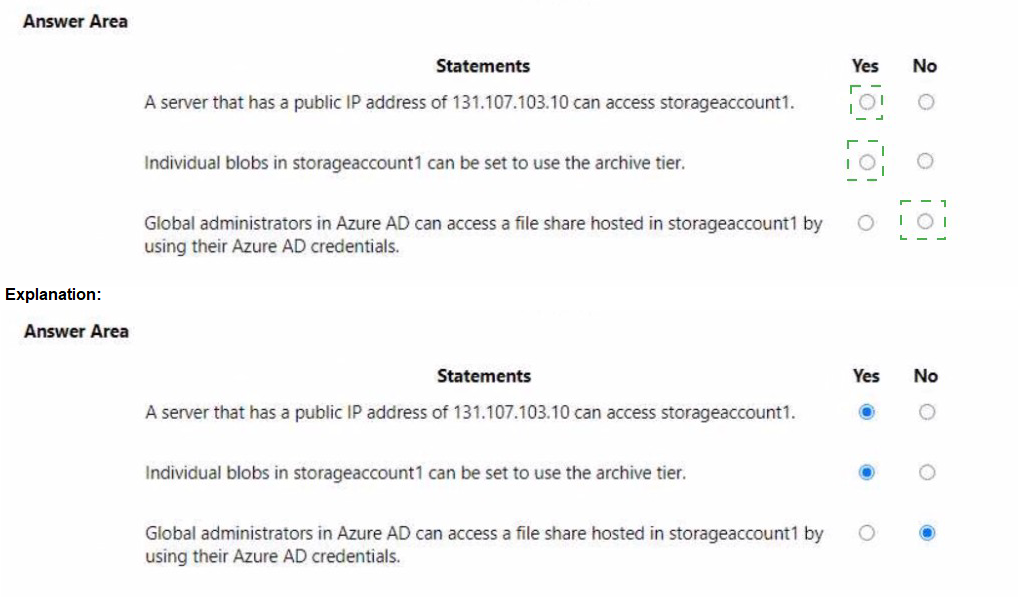
A. one virtual machine scale set that has 10 virtual machines instances
B. one Availability Set that has three fault domains and one update domain
C. one Availability Set that has 10 update domains and one fault domain
D. one virtual machine scale set that has 12 virtual machines instances
You have two Azure virtual machines as shown in the following table.
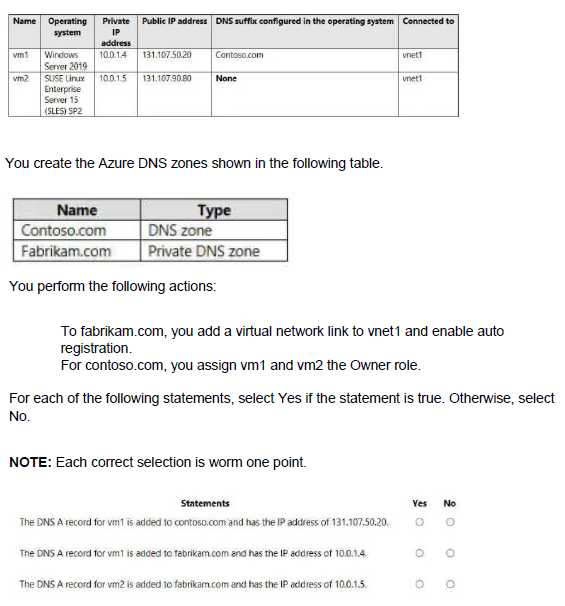

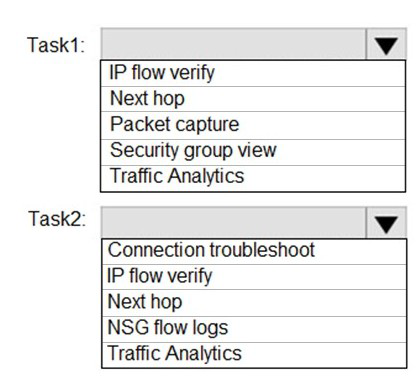
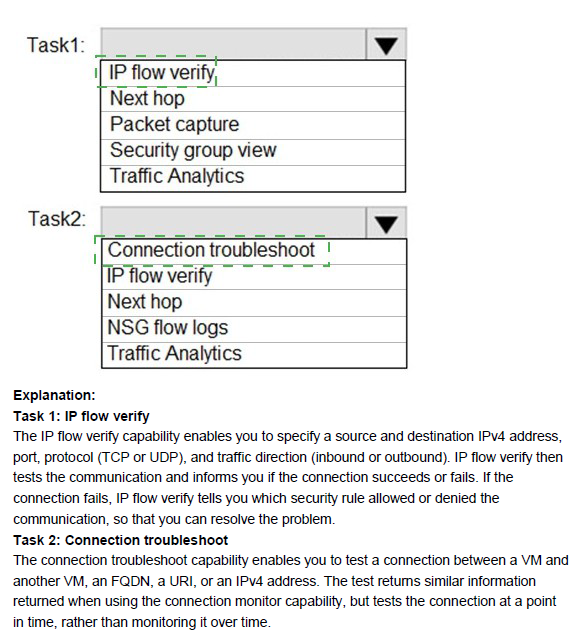
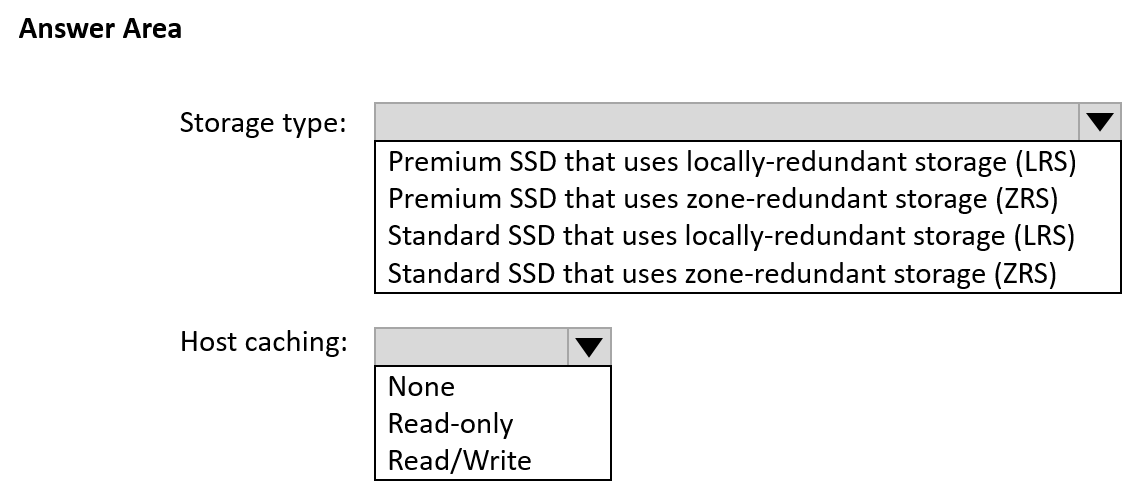
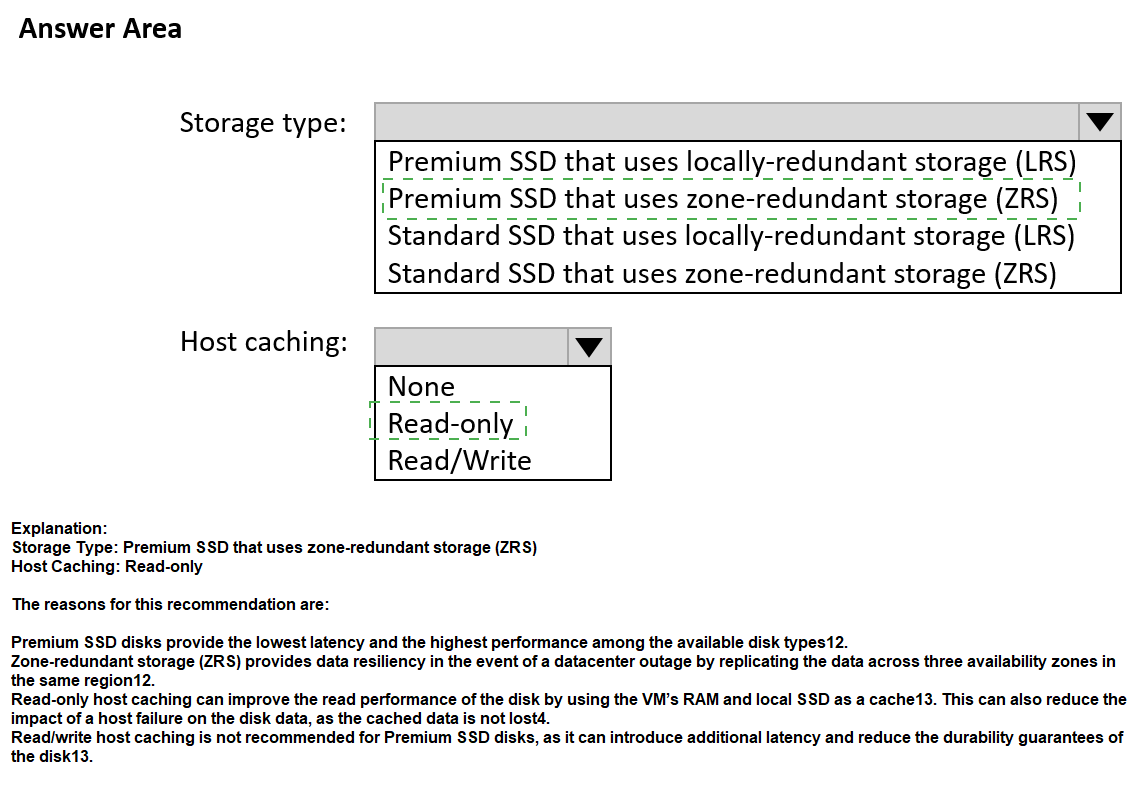
You have a Microsoft Entra tenant that contains the groups shown in the following table.
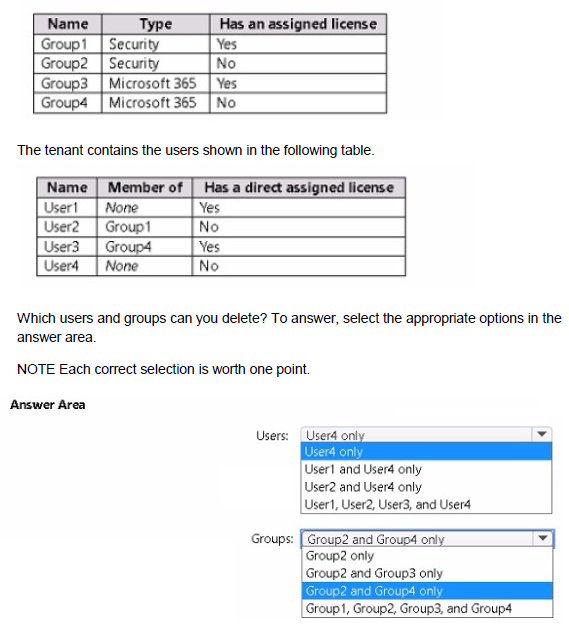
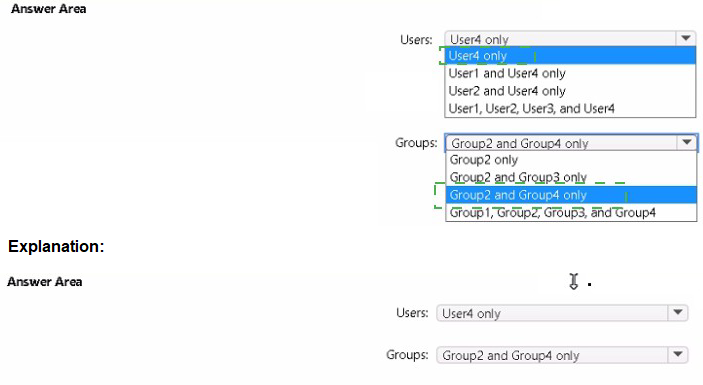
A. Yes
B. No

A. The App Service plan for WebApp1 moves to North Europe. Po1icy2 applies to WebApp1.
B. The App Service plan for WebApp1 remains in West Europe. Policy2 applies to WebApp1.
C. The App Service plan for WebApp1 moves to North Europe. Policy1 applies to WebApp1.
D. The App Service plan for WebApp1 remains in West Europe. Policy1 applies to WebApp1.
| Page 11 out of 27 Pages |
| Previous |